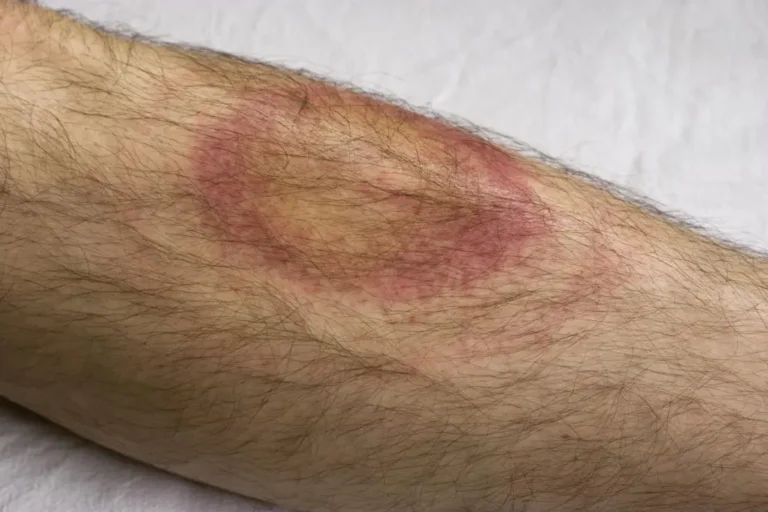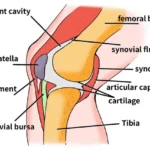Symptoms: How Does Lyme Disease Present Itself?
Doctors categorize the symptoms of Lyme disease into three phases: early localized, early disseminated, and late disease. These phases can overlap, and some patients may not experience early symptoms at all.
Early Localized Disease
In its early stage, Lyme disease often presents as a red rash at the site of the tick bite, typically appearing within a month of infection. The bite is commonly located near the waistline or in warm, moist areas of the body. Patients may notice burning, itching, or discomfort at the site. The rash usually grows over several days and can take on a bull’s-eye appearance, with a red outer ring and a white center, or it may appear uniformly red.
In addition to the rash, many patients report flu-like symptoms, including headaches, fatigue, and muscle or joint pain.
Early Disseminated Disease
This phase can occur days to months after the tick bite. Patients may not recall having a rash or noticing a tick bite. Symptoms often involve the heart and nervous system:
- Cardiac Issues: Approximately 8% of untreated patients with a rash develop heart complications, such as heart block or weakened heart muscles. These symptoms usually resolve on their own.
- Neurologic Issues: Around 10% of untreated patients experience nervous system damage, including meningitis, headaches, and nerve-related symptoms like numbness, weakness, or pain. These neurological effects often resolve over time but may do so slowly.
Late Disease
Symptoms of late Lyme disease can appear months or even years after the initial tick bite. Interestingly, some patients with late-stage symptoms never exhibited earlier signs of the disease. Common late symptoms include:
- Arthritis: Intermittent joint pain that affects multiple joints is a hallmark of late Lyme disease. About 10% of these patients develop chronic arthritis in one knee.
- Lingering Effects: Many patients report ongoing fatigue, headaches, and joint pain that persist for months after treatment. These symptoms usually subside gradually without additional therapy.
This rephrased version highlights the key phases and symptoms of Lyme disease while integrating SEO-friendly terms like “Lyme disease symptoms,” “tick bite,” and “early localized Lyme disease.” Let me know if you need further refinements!
Diagnosis: How is Lyme Disease Identified?
Diagnosing Lyme disease involves a combination of your medical history and a physical examination. Blood tests may be ordered, but they are primarily used to confirm a suspected diagnosis. The most common blood tests include the ELISA (enzyme-linked immunosorbent assay) and Western blot. However, these tests are not foolproof—they can sometimes yield false positives or inconclusive results. Additionally, if the infection is recent (less than six weeks), your body may not have produced enough antibodies to be detected.
In rare cases, doctors may analyze synovial fluid (found in the joints) or spinal fluid to confirm the presence of Lyme disease. These advanced tests are typically reserved for complex or unclear cases.
Antibiotic Therapy
A course of antibiotics lasting two to four weeks is highly effective in curing Lyme disease. Early treatment significantly reduces the risk of developing later complications involving the heart, nervous system, or joints. For patients with symptoms of early disseminated or late-stage Lyme disease, intravenous (IV) antibiotics are often recommended.
Post-Treatment Recovery
It’s common for symptoms such as headaches, fatigue, and muscle or joint pain to persist for months after completing antibiotics. Neurological damage may take even longer to heal, as nerve regeneration progresses at a slow rate of one to two millimeters per day. This prolonged recovery does not indicate the need for additional antibiotics; rather, it reflects the body’s natural healing process. If your symptoms persist without improvement, consult your doctor to explore other potential causes.
Preventive Measures
Even if you’ve been bitten by a tick, the risk of developing Lyme disease remains low. Doctors typically wait for symptoms to appear before initiating treatment.
Prevention is the most effective strategy for Lyme disease. To protect yourself:
- Check your body for ticks after spending time outdoors.
- Wear light-colored clothing to spot ticks more easily.
- Cover exposed skin by wearing long clothing and tucking your pants into your socks.
- Use a bug spray containing DEET to repel ticks and minimize exposure.





